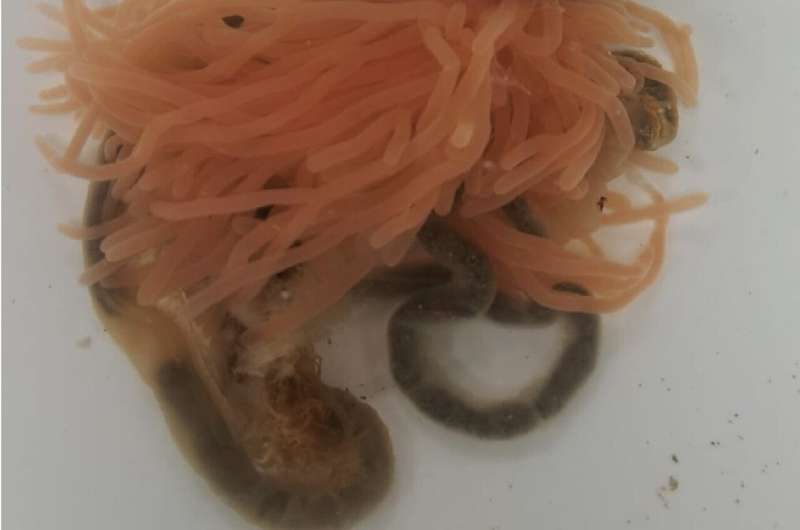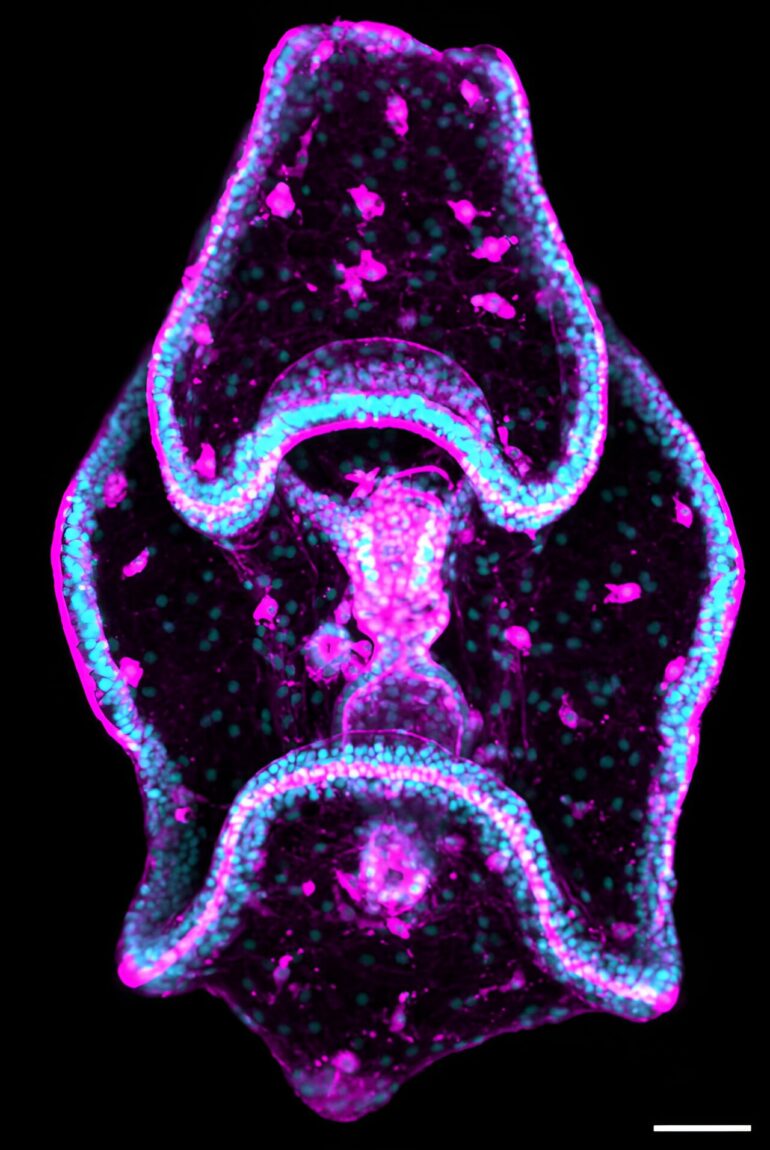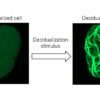Scientists have a handful of standard research organisms, including fruit flies and mice, that they use to study the evolutionary development (evo-devo) of animal lineages over time. Yet the more research organisms they can study, the deeper our understanding of life and the more knowledge we have to advance biomedicine and ecological conservation.
Researchers at the Marine Biological Laboratory (MBL), Woods Hole, and the Stazione Zoologica Anton Dohrn (SZS) in Naples, Italy, have added to the evo-devo toolbox by establishing Holothuria tubulosa, a species of sea cucumber, as an experimental research organism. They published their protocols recently in Frontiers in Evolutionary Developmental Biology.
The sea cucumber, found abundantly in the Mediterranean Sea and the eastern Atlantic Ocean, is an echinoderm, a group of marine invertebrates that includes sea urchins, sea stars and sand dollars. Some species of echinoderms have been used as developmental models for over a century thanks to their low costs, high fecundity, optically clear larvae and, more recently, amenability to genetic studies.
“Echinoderms are the closest invertebrates to humans genetically, which means we have most of our genes in common. If we understand how those genes function in an echinoderm, than we also know how they function in humans,” said Margherita Perillo, a research scientist at MBL who led the study.
“Sea cucumbers also have attributes and special skills—such as being deposit feeders, which cleans the ocean floor, and the ability to completely regenerate their whole body—that could be useful in conservation and biomedicine,” she said.

The sea cucumber Holothuria tubulosa eviscerating its organs, including ovaries (orange). © Perillo et al, Front. Ecol. Evol. 2024
Protocol for producing embryonic cultures
The first step in establishing H. tubulosa as a research organism was to develop a protocol to efficiently produce embryonic cultures in a lab setting. Existing methods, including mimicking the animal’s natural breeding cycle and inducing the release of all the animal’s organs by evisceration (a behavior that sea cucumbers normally exhibit when threatened) were complicated, inefficient or both.
To overcome this, the team led by Rossella Annunziata (SZS) and Perillo pioneered a noninvasive technique to repeatedly harvest a small number of gametes (sperm and eggs) over a long period of time. The microsurgery involves a small incision near a sea cucumber’s reproductive organs, allowing for the retrieval of testes or ovaries. The incision heals quickly and gives researchers the ability to harvest every few days from the same animal.
Since eggs



